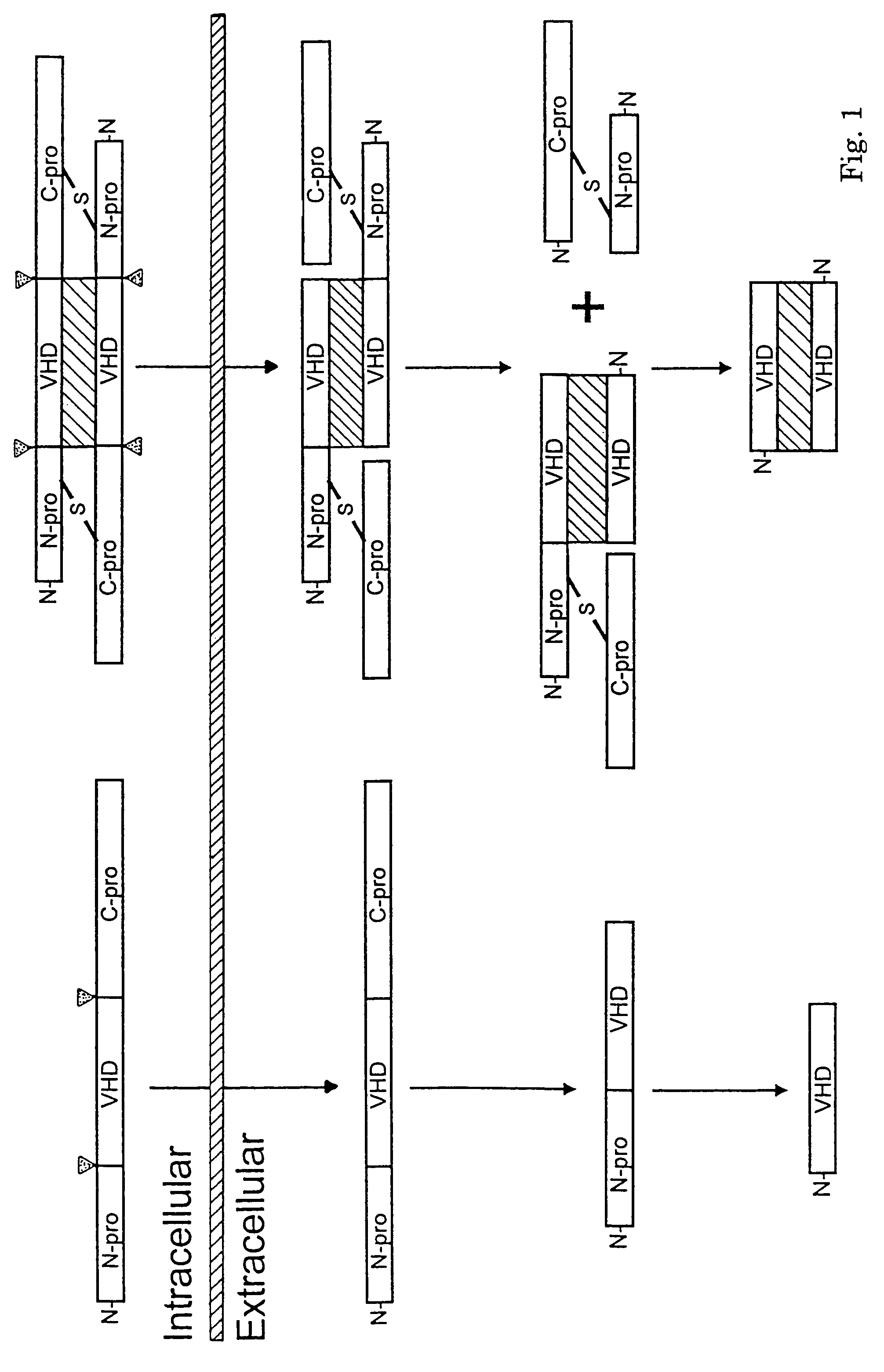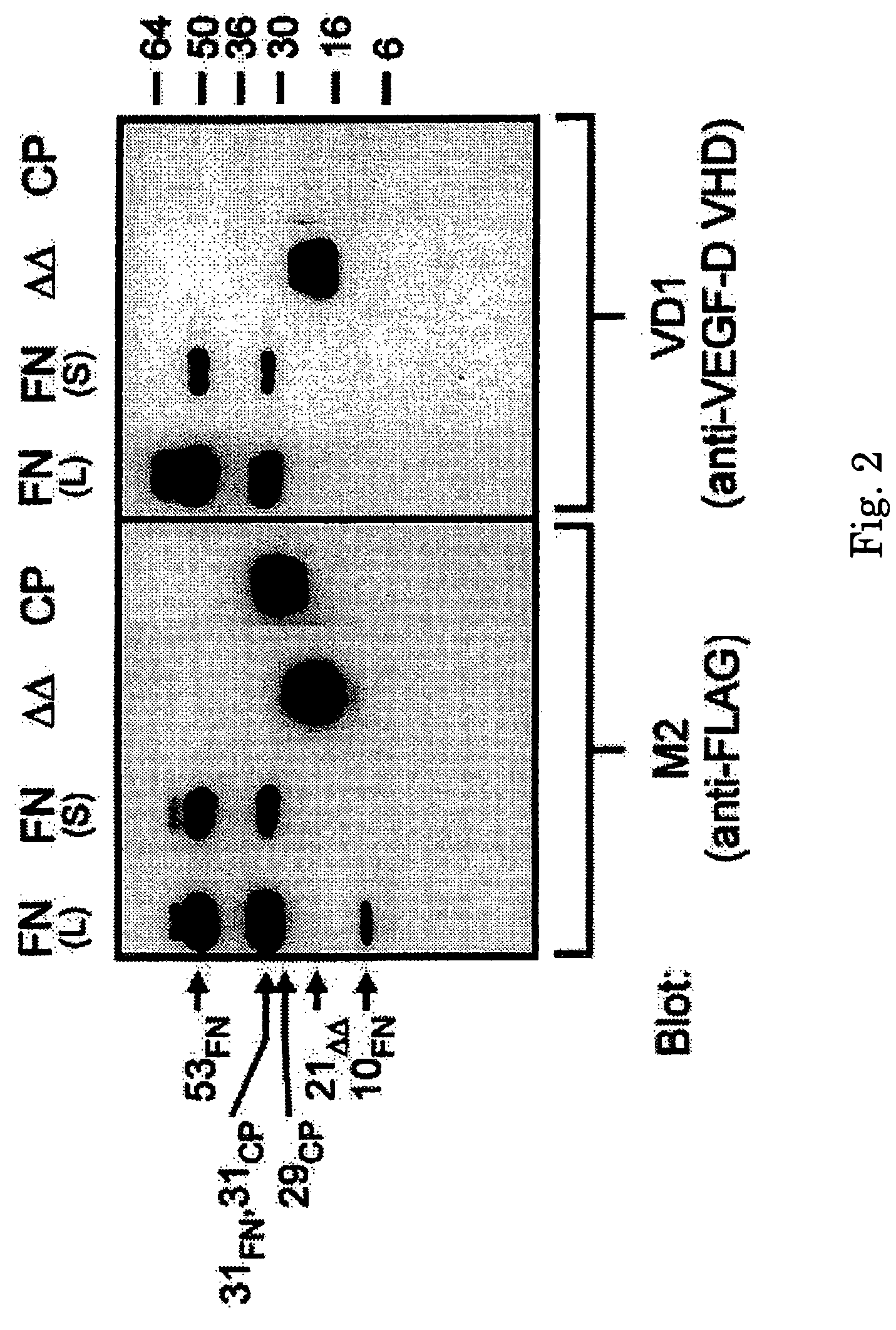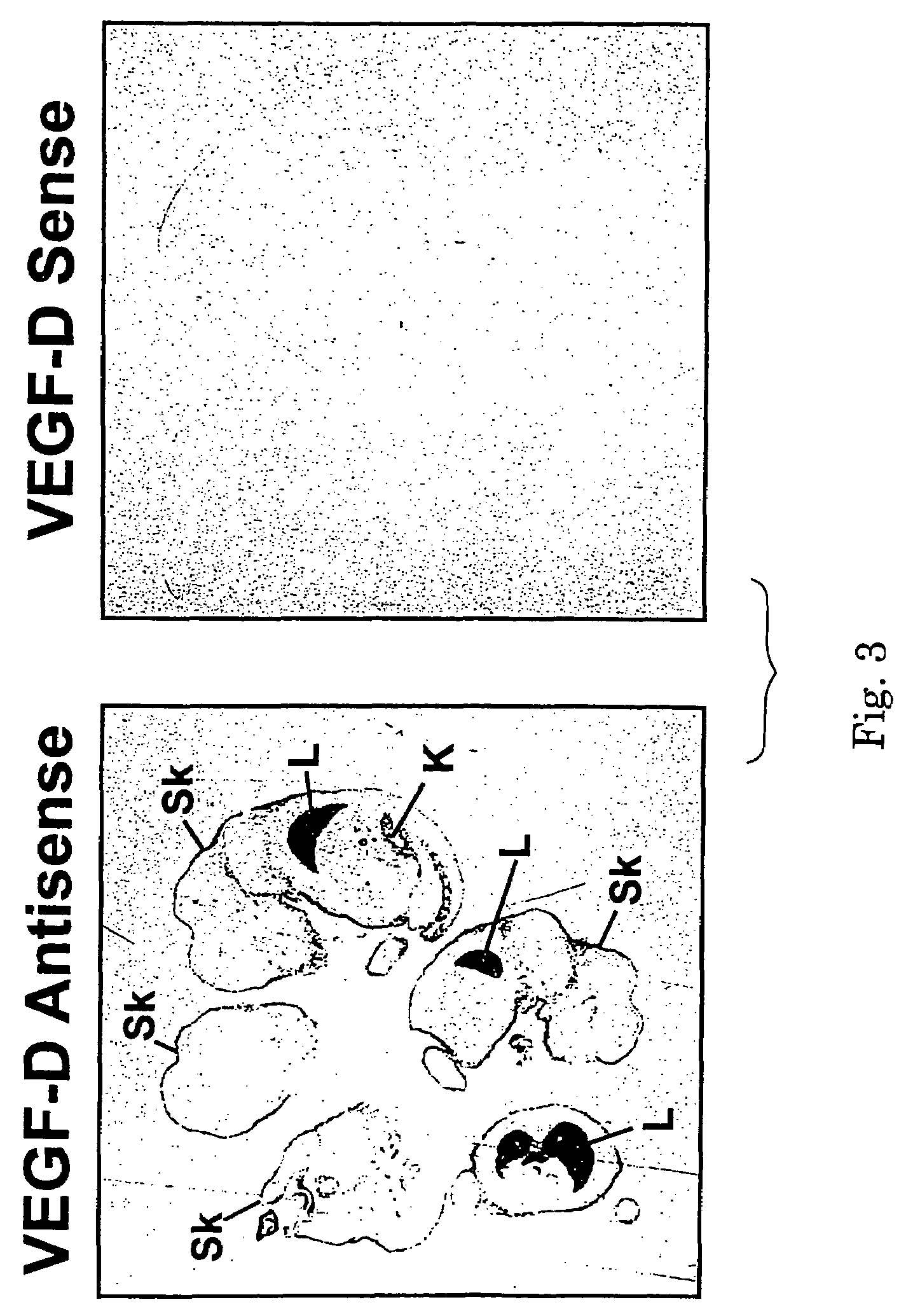Methods for treating neoplastic disease characterized by vascular endothelial growth factor D expression, for screening for neoplastic disease or metastatic risk, and for maintaining vascularization of tissue
a growth factor d and endothelial growth factor technology, applied in the field of neoplastic disease treatment methods, can solve the problems of tightly controlled and limited angiogenesis, difficult identification of lymphatic vessels, and reduced immune response to tumors.
- Summary
- Abstract
- Description
- Claims
- Application Information
AI Technical Summary
Benefits of technology
Problems solved by technology
Method used
Image
Examples
example 1
Production of Monoclonal Antibodies that Bind to Human VEGF-D
[0113]In order to detect the VEGF Homology Domain (VHD) rather than the N- and C-terminal propeptides, monoclonal antibodies to the mature form of human VEGF-D (residues 93 to 201 of full-length VEGF-D (SEQ ID NO:2), i.e. with the N- and C-terminal regions removed) were raised in mice. A DNA fragment encoding residues 93 to 201 was amplified by polymerase chain reaction (PCR) with Pfu DNA polymerase, using as template a plasmid comprising full-length human VEGF-D cDNA (SEQ ID NO:1).
[0114]The amplified DNA fragment, the correctness of which was confirmed by nucleotide sequencing, was then inserted into the expression vector pEFBOSSFLAG (a gift from Dr. Clare McFarlane at the Walter and Eliza Hall Institute for Medical Research (WEHI), Melbourne, Australia) to give rise to a plasmid designated pEFBOSVEGF-DΔNΔC. The pEFBOSSFLAG vector contains DNA encoding the signal sequence for protein secretion from the interleukin-3 (IL-3...
example 2
Specificity of MAb 4A5
[0120]The specificity of MAb 4A5 (renamed VD1) for the VHD of human VEGF-D was assessed by Western blot analysis. Derivatives of VEGF-D used were VEGF-DΔNΔC, consisting of amino acid residues 93 to 201 of human VEGF-D tagged at the N-terminus with the FLAG® octapeptide (Example 1), VEGF-D-FULL-N-FLAG, consisting of full-length VEGF-D tagged at the N-terminus with FLAG® (Stacker, S. A. et al., J Biol Chem 274: 32127-32136, 1999), and VEGF-D-CPRO, consisting of the C-terminal propeptide, from amino acid residues 206 to 354, which was also tagged with FLAG® at the N-terminus.
[0121]These proteins were expressed in 293-EBNA-1 cells, purified by affinity chromatography with M2 (anti-FLAG®) MAb (IBI / Kodak, New Haven, Conn.) using the procedure set forth in Achen, M. et al., Proc Natl Acad Sci USA 95: 548-553, 1998. Fifty nanograms of purified VEGF-D-FULL-N-FLAG (FN), VEGF-DΔNΔC (ΔΔ), and VEGF-D-CPRO (CP) were analyzed by SDS-PAGE (reducing) and by Western blot using t...
example 3
In Situ Hybridization Studies of VEGF-D Gene Expression in Mouse Embryos
[0125]The pattern of VEGF-D gene expression was studied by in situ hybridization using a radiolabeled antisense RNA probe corresponding to nucleotides 1 to 340 of the mouse VEGF-D1 cDNA (SEQ ID NO:4). The antisense RNA was synthesized by in vitro transcription with T3 RNA polymerase and [35S] UTPαs. Mouse VEGF-D is fully described in International Patent application PCT / US97 / 14696 (WO 98 / 07832). This antisense RNA probe was hybridized to paraffin-embedded tissue sections of mouse embryos at post-coital day 15.5. The labeled sections were subjected to autoradiography for 2 days.
[0126]The resulting autoradiographs for sections hybridized to the antisense RNA and to complementary sense RNA (as negative control) are shown in FIG. 3. In FIG. 3, “L” denotes lung and “Sk” denotes skin, and the two tissue sections shown are serial sections. Strong signals for VEGF-D mRNA were detected in the developing lung and associat...
PUM
| Property | Measurement | Unit |
|---|---|---|
| concentrations | aaaaa | aaaaa |
| molecular weight | aaaaa | aaaaa |
| vascular permeability | aaaaa | aaaaa |
Abstract
Description
Claims
Application Information
 Login to View More
Login to View More - R&D
- Intellectual Property
- Life Sciences
- Materials
- Tech Scout
- Unparalleled Data Quality
- Higher Quality Content
- 60% Fewer Hallucinations
Browse by: Latest US Patents, China's latest patents, Technical Efficacy Thesaurus, Application Domain, Technology Topic, Popular Technical Reports.
© 2025 PatSnap. All rights reserved.Legal|Privacy policy|Modern Slavery Act Transparency Statement|Sitemap|About US| Contact US: help@patsnap.com



